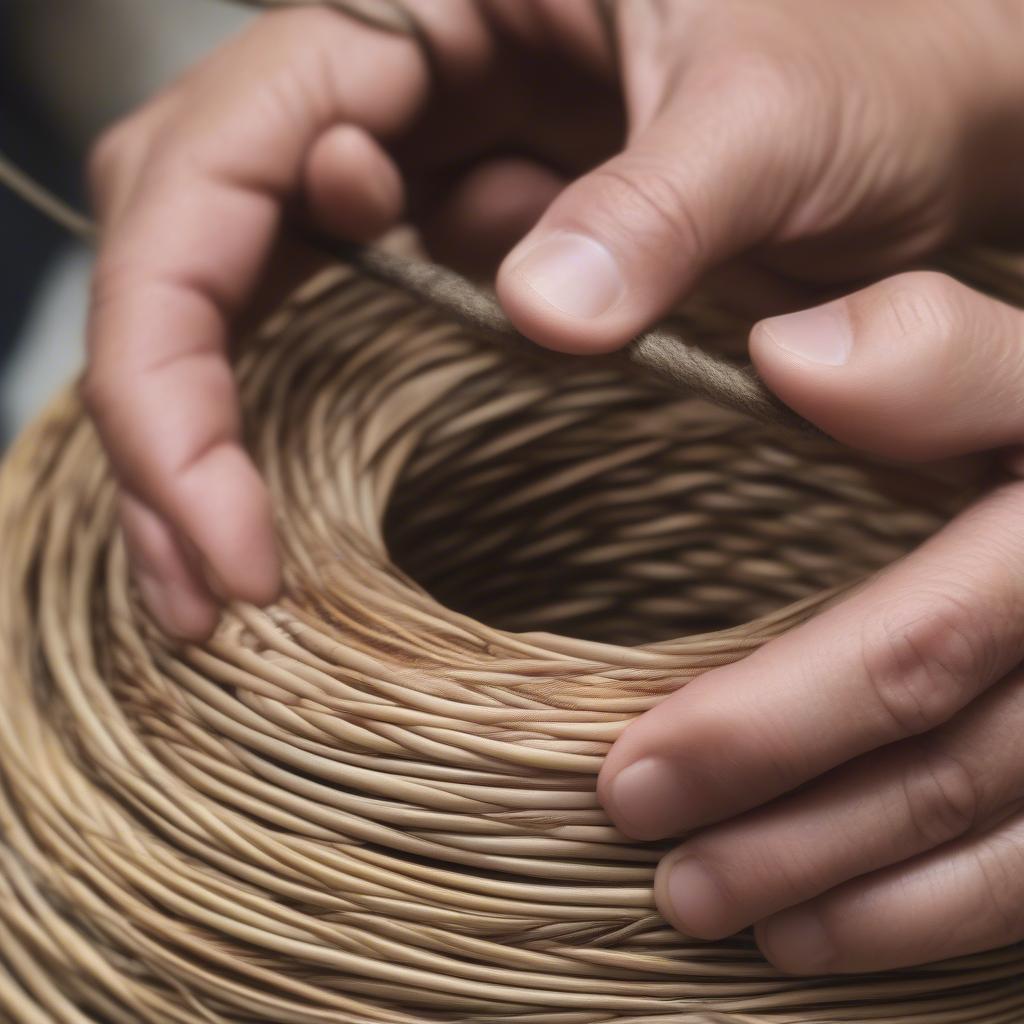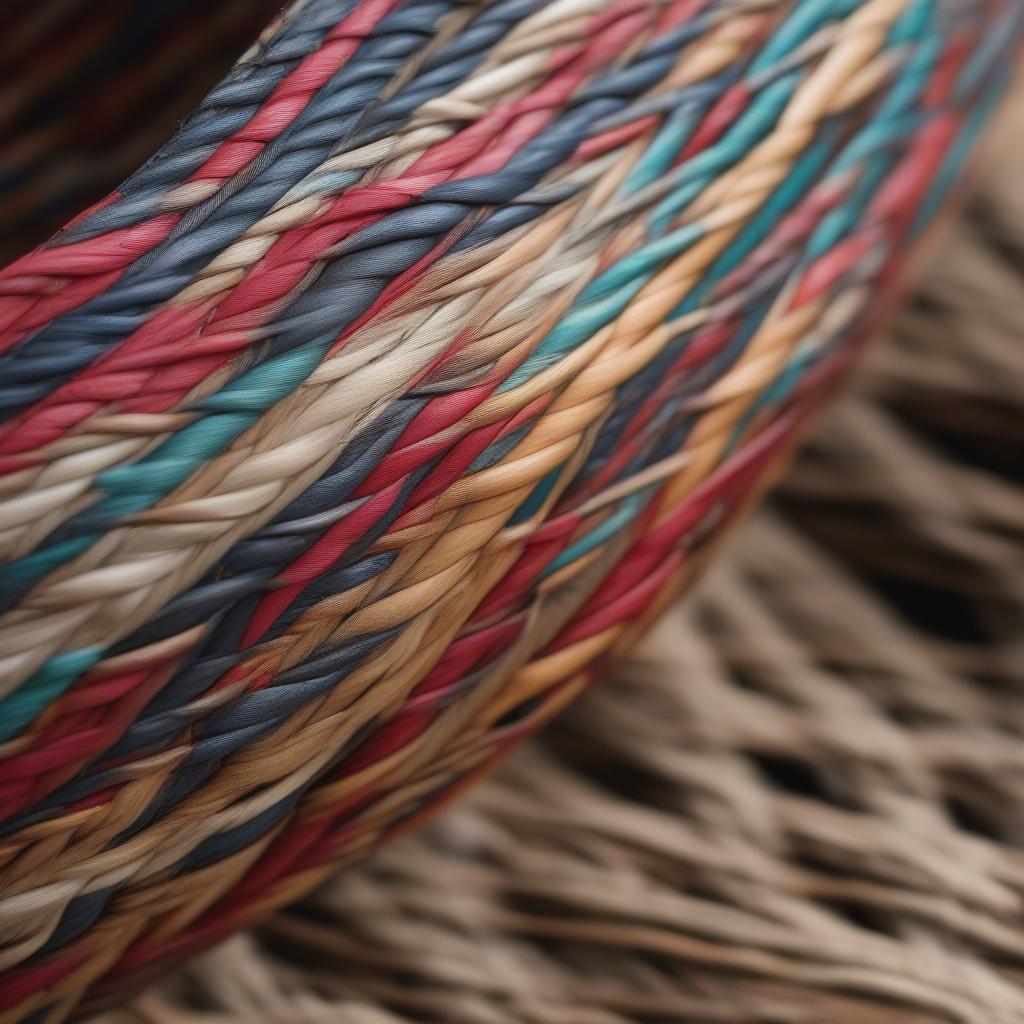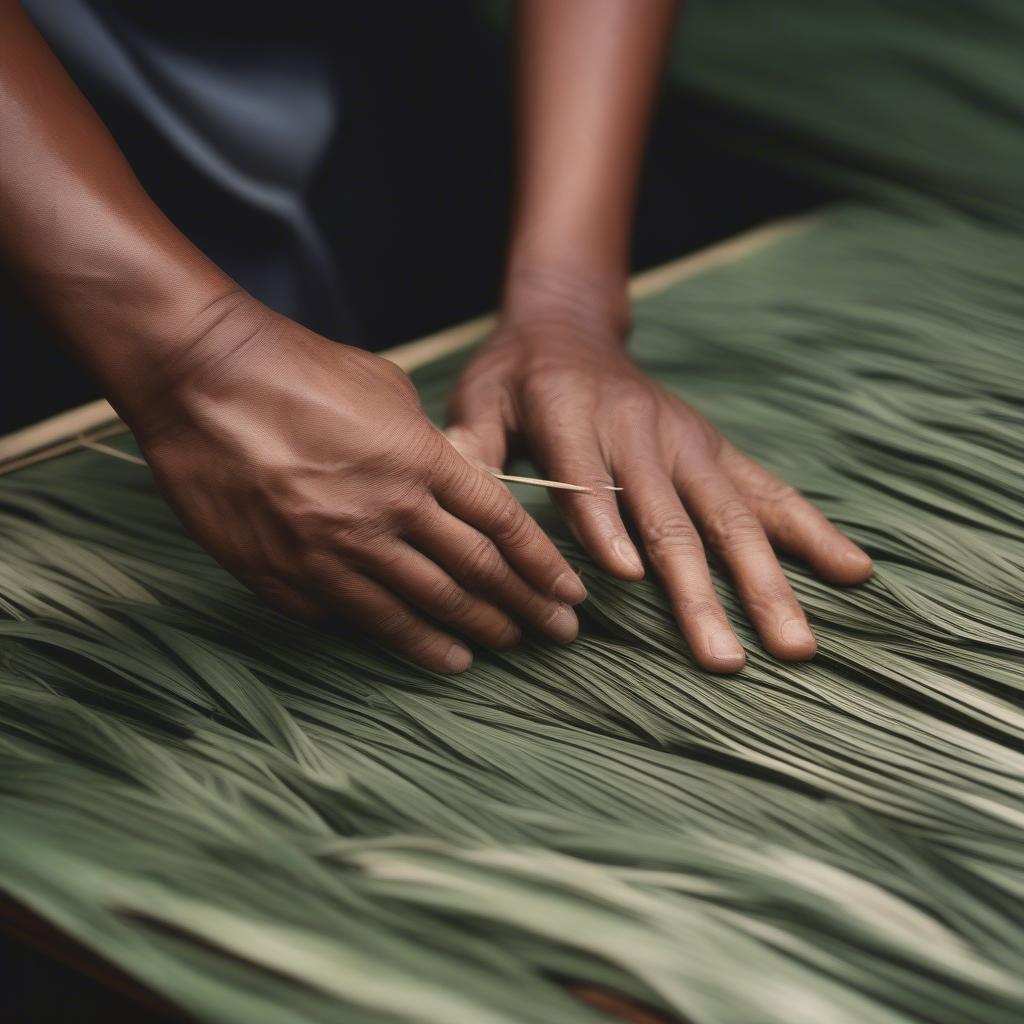Basket Weaving
What Are the Three Techniques Used in Basket Weaving?
Basket weaving, a timeless craft, utilizes various techniques to transform natural materials like wicker and rattan into beautiful and functional objects. Understanding these techniques is key to appreciating the artistry and skill involved in creating these woven masterpieces. This article will explore three fundamental basket weaving techniques, offering insights into their unique characteristics and applications.
Coil, Twining, and Plaiting: The Core Basket Weaving Techniques
Basket weaving techniques can be broadly categorized into three main types: coiling, twining, and plaiting. While variations exist within each category, these three represent the fundamental approaches to interlacing materials to form a basket.  Coiling basket weaving technique involves wrapping a pliable material around a core.
Coiling basket weaving technique involves wrapping a pliable material around a core.
Coiling: A Building Process
Coiling is perhaps the oldest and most widespread basket weaving technique. It involves wrapping a pliable “weaver” material, such as grasses, reeds, or even yarn, around a sturdy “core” material. The core, which can be a bundle of fibers or a pre-formed rod, provides the structure and shape of the basket. The weaver is then sewn to the previous row using a needle and thread or a strong, flexible material like sinew or split root. This creates a continuous spiral that builds the basket upwards. Coiling offers incredible versatility, allowing for intricate designs and variations in shape and size. From small trinket baskets to large storage containers, coiling lends itself to a wide array of applications.
Twining: An Interwoven Dance
Twining is another fundamental basket weaving technique that relies on interweaving two or more flexible weavers around rigid vertical elements called “stakes” or “warps.” The weavers are twisted around each stake, creating a diagonal pattern that holds the structure together. Twining allows for complex decorative patterns and textures, as the weavers can be varied in color and material.  Twining basket weaving close-up showing intricate weaving pattern. This technique is often used for creating sturdy and functional baskets, as well as decorative pieces.
Twining basket weaving close-up showing intricate weaving pattern. This technique is often used for creating sturdy and functional baskets, as well as decorative pieces.
Plaiting: Weaving Over and Under
Plaiting, also known as braiding or weaving, is a technique that involves interlacing multiple strands of material over and under each other. Unlike coiling and twining, plaiting typically uses flat, ribbon-like materials, which are interwoven in a regular pattern. This creates a flat, woven surface that can be used to form the base or sides of a basket. Plaiting is a common technique for making baskets from materials like palm leaves, grasses, and even paper. While plaiting may seem simpler than coiling or twining, it can be used to create intricate and beautiful designs.  Plaiting basket weaving using palm leaves, showing a flat woven surface.
Plaiting basket weaving using palm leaves, showing a flat woven surface.
Beyond the Basics: Variations and Combinations
While these three techniques—coiling, twining, and plaiting—form the foundation of basket weaving, countless variations and combinations exist. Artisans often combine techniques to create unique and intricate designs. For instance, a basket might have a plaited base with twined sides, or a coiled body with decorative plaiting accents. The possibilities are truly endless, limited only by the creativity and skill of the weaver.
Conclusion: A Legacy of Woven Art
Basket weaving, with its core techniques of coiling, twining, and plaiting, is more than just a craft; it’s a testament to human ingenuity and artistic expression. From functional storage solutions to exquisite works of art, these techniques allow us to transform natural materials into objects of beauty and utility. So, the next time you admire a woven basket, remember the intricate techniques and skilled hands that brought it to life. What are you waiting for? Dive into the world of basket weaving and discover the magic of these ancient techniques!
FAQ
- What materials are commonly used in basket weaving?
- Can I learn basket weaving at home?
- What is the difference between wicker and rattan?
- What are some common basket weaving patterns?
- Where can I find basket weaving supplies?
- How long does it take to weave a basket?
- What are some tips for beginners in basket weaving?
If you need further support, please contact us at Hanoi, Vietnam or Tech Avenue, Suite 12, San Francisco, CA 94105, USA. We have a 24/7 customer service team.
